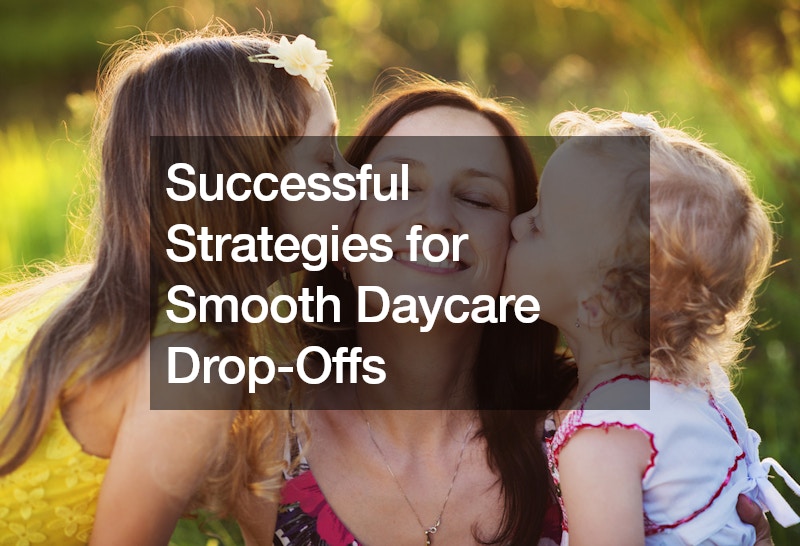Dropping off your child at daycare can be a challenging experience for both parent and child alike. Tears, anxiety, and uncertainty often accompany this daily ritual. However, with some strategic approaches, this transition can become significantly smoother, benefitting both you and your little one. Here are some effective strategies to master the daycare drop-off routine.
1. Consistency is Key
Consistency in drop-off times can make a world of difference in your child’s daycare experience. Establishing a regular routine provides a sense of security and predictability, easing the transition from home to preschool. Try to arrive at the same time every day, if possible.
This consistency allows your child to anticipate what comes next, whether it’s breakfast, playtime, or circle activities. Daycares operate on schedules, and adhering to a consistent drop-off time aligns your child with the rhythm of the preschool day.
2. Written Communication
A simple note can go a long way in ensuring a smooth drop-off. Jot down any pertinent information for your child’s teacher, such as recent activities, mood changes, or special instructions. This written communication provides valuable insights into your child’s well-being and helps the teacher better understand their needs. Whether it’s a quick update on morning routines or a heads-up about a restless night, these notes foster a collaborative relationship between parent and teacher, enhancing the daycare experience for everyone involved.
3. Engage Early
Arriving a few minutes before the rush allows you to engage your child in an activity before saying goodbye. This proactive approach helps ease the transition by redirecting their attention and reducing separation anxiety. Spend a few moments helping them choose a toy or settle into a table activity. By getting them engaged in an enjoyable task, you set a positive tone for the day and reassure them that preschool is a fun and safe environment. This early engagement not only benefits your child but also supports the teacher in managing the morning routine more smoothly.
4. Keep Goodbyes Brief
While it may be tempting to linger, keeping goodbyes short and sweet is often the best approach. Lingering can prolong your child’s distress and make the separation harder for both of you. Trust that your child’s teacher is equipped to comfort and care for them in your absence. Offer hugs, kisses, and reassurance, then make your exit promptly. This clear and confident approach sends a reassuring message to your child that you trust them to have a great day at preschool. Remember, a quick goodbye sets a positive tone for the day and allows your child to transition more smoothly into the preschool environment.
5. Trust the Teacher
Building trust with your child’s teacher is crucial for a successful daycare experience. Trust that they have your child’s best interests at heart and are capable of providing the care and support they need. Avoid the temptation to hover or eavesdrop outside the classroom door. Instead, communicate openly with the teacher and establish a partnership based on mutual respect and trust. Knowing that your child is in good hands allows you to leave with confidence, knowing they are well cared for and supported in their preschool journey.
6. Establishing a Transition Ritual
Creating a special goodbye ritual can help ease the separation anxiety for both parent and child. This could be a secret handshake, a special song, or a quick game that you play together before saying goodbye. Having a predictable and comforting routine can make the separation less daunting for your child and give them something to look forward to each morning.
7. Acknowledge and Validate Feelings
It’s essential to acknowledge and validate your child’s feelings about daycare drop-offs. Let them know that it’s okay to feel sad or anxious about saying goodbye. Encourage them to express their emotions and reassure them that you understand how they feel. Empathize with their emotions while also offering words of encouragement and support. By validating their feelings, you help them feel understood and supported, which can make the transition easier for everyone.
8. Stay Positive and Calm
Children are highly attuned to their parents’ emotions, so it’s essential to stay positive and calm during drop-offs. Even if you’re feeling anxious or emotional yourself, try to project confidence and reassurance to your child. Smile, use a cheerful tone of voice, and offer words of encouragement as you say goodbye. Your calm and positive demeanor can help reassure your child that everything is okay and make the separation less stressful for both of you.
In Conclusion
Navigating the daycare drop-off routine can be challenging, but with the right strategies in place, it can become a smoother and more positive experience for both parent and child. Consistency, written communication, early engagement, brief goodbyes, trust in the teacher, establishing a transition ritual, acknowledging and validating feelings, and staying positive and calm are key ingredients for success. By implementing these strategies, you can help your child feel secure, confident, and happy in their preschool environment, setting the stage for a fulfilling day of learning and play.
.

